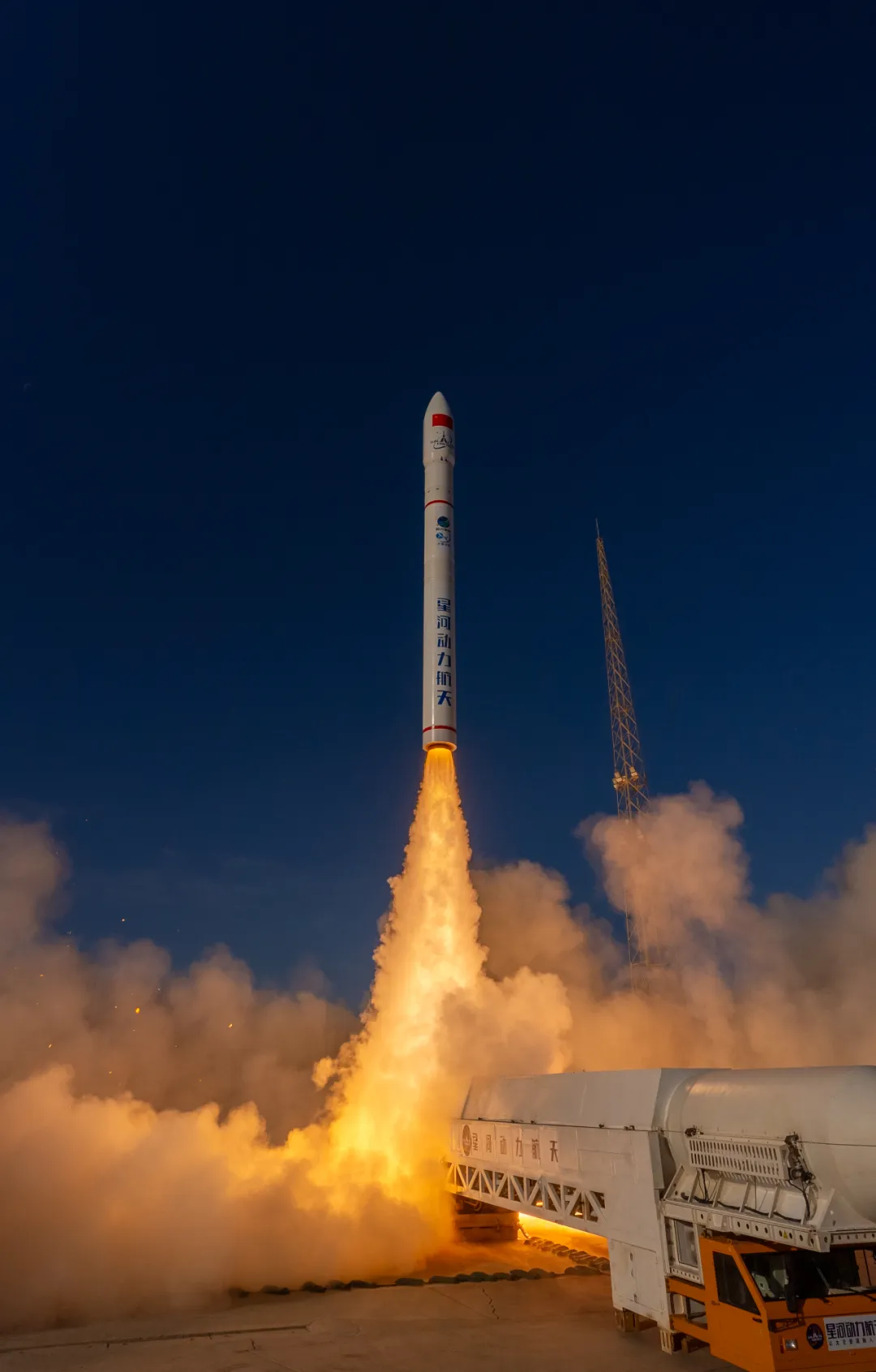At 7:39 p.m. Beijing time on May 31, 2024, Galactic Energy successfully completed the 12th mission of Ceres 1- Jiangnan Concentration Area launch vehicle (mission code: Heroes) from the Jiuquan Satellite Launch Center, and successfully launched the Aurora Constellation's 01 satllite (Fudan Information Star) and 02 satllite (Shanghai Electric College 1), Hebei Linxi 1 Satellite, Zhangjiang Hi-Tech Satellite, and Against the Current 2 Satellite into the 535km morning and evening orbits. A total of 5 satellites were sent into 535km morning and evening orbits.

Aurora Constellation 01 (Fudan Information Satllite) and 02 (Shanghai Institute of Electrical Engineering No.1) are jointly developed by Beijing Aurora Starcom Technology Co., Ltd. with China Aerospace Science and Technology Group, Shanghai Aerospace, Galactic Energy, Beijing Tianchain Measurement and Control, Fuchang Space, Patrol Sky Aerospace, the 29th Research Institute of China Electronic Science and Technology Corporation, the School of Information Science and Engineering of Fudan University, and the Shanghai Institute of Electrical Engineering, etc. It will carry out the satellite development in orbit. It will carry out inter-star and star-ground long-time communication verification work in orbit, and build "laser communication in-orbit experimental platform", which can respond to the needs of business scenarios with different rates, different systems and different orbital spacings, and fully explore the influence factors of space environment, hot and cold alternation, platform attitude perturbation, orbit control maneuvering, and other factors of key concern in the industry on long-time communication. The influence factor of chain-building communication is further optimized, ATP tracking algorithm is further optimized, and the feasibility and robustness of the application of low-grade components in commercial spaceflight is explored, so as to carry out in-orbit verification in advance for the feasibility of laser communication application in China's low-orbit satellite Internet giant constellation, accumulate in-orbit data, and share the test data with users and industry experts, so as to lay a foundation for accelerating the construction of China's giant constellations.
Hebei LINXI-1 satellite, jointly developed by Tianjin Yunyao Aerospace Science & Technology Co., Ltd. and Beijing Juntian Aerospace Technology Co., Ltd. is a meteorological remote sensing satellite carrying a GNSS occultation atmospheric detection payload, which can obtain information on atmospheric temperature, humidity, barometric pressure, and electron density of the ionosphere to make up for the deficiencies of the traditional means of meteorological observation. The satellite adopts the Junitian No. 1 satellite platform, which fully embodies the design concepts of modularization, integration and low cost. The platform applies the intelligent in-orbit management system independently developed by Junitian Aerospace, which significantly improves the satellite's autonomous control capability and comprehensive utilization efficiency.
Zhangjiang Hi-Tech Satellite No. 2 and Against the Grain No. 2 satellites fully inherit the mature products and development technology programs of infrared remote sensing satellites, which are characterized by high integration, light weight, small volume and high cost-effectiveness. The satellites are equipped with GNSS masks and long-wave infrared camera payloads, through the inversion of GNSS mask data can get the temperature, humidity, pressure of the atmosphere and ionospheric electron density, and through the long-wave infrared camera to obtain the target information, atmospheric and hotspot target detection, which has a broad application prospect and application value in the field of meteorological observation.
As the test payload, Lightinform's chalcogenide module went into space with the rocket to collect and analyze data on the operational endurance and efficiency of chalcogenide solar cells in the extreme environment of space.
Thanks to theJiangnan Concentration Area and NetEase game "SWORD OF JUSTICE" for their support of this mission!
This launch mission is following the completion of the 29th of this month, Ceres I sea-launched type (Remote 2) mission, only one day apart, the successive completion of the launch mission, is a private commercial rocket enterprise launch time interval between the shortest two commercial launch delivery, highlighting the huge potential and broad prospects of China's commercial space market, Star River Power is a broader range of technological innovations and more efficient commercial operations to help the China's commercial space industry continues to develop and grow.
Up to now, Galactic Energy has served nearly 20 commercial satellite customers and successfully launched 44 commercial satellites of different types.